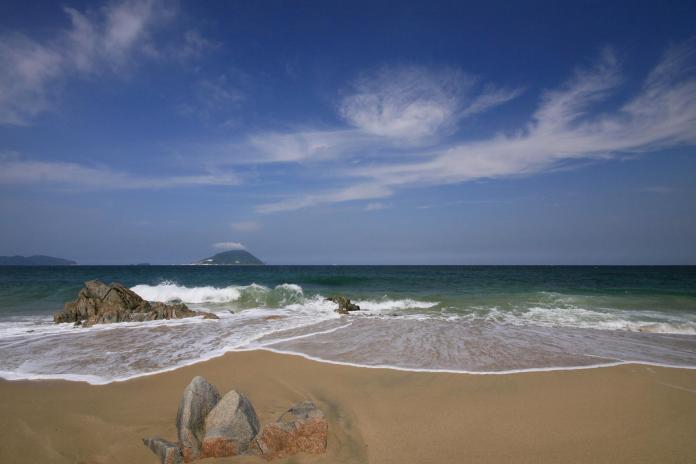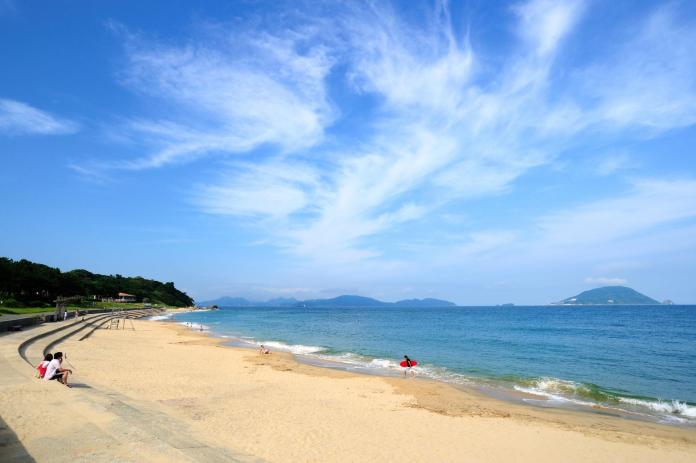Japan is the first Asian country to host the Rugby World Cup as twelve cities from Hokkaido to Kyushu welcome rugby fans from around the world. It takes place over six weeks, giving travelers the opportunity to explore the areas around and in between some great host cities in Japan.
1. HOKKAIDO: SAPPORO DOME
Sapporo, which hosted the 1972 Sapporo Olympic Winter Games, has long been Hokkaido’s international hub. At the Okurayama Ski Jump Stadium, take the chair lift to the top of the hill for views of Sapporo and peer down the 90-meter ski jump. Feel like an Olympic athlete at the museum with their ski jump simulation games.
Mt. Moiwa is one of Sapporo area’s small, forested mountains. With easy access from Susukino—Sapporo’s night-life area—it makes for a great half-day trip. You can even view the city lights as the ropeway and cable car operate until 11 p.m.
Early birds can check out Hokkaido’s fresh fish and seafood at Sapporo’s version of Tsukiji Market—the lively Nijo Ichiba. Nearby are several sushi restaurants where you’ll find quality seafood for good value.
Related OJ Articles
An Insider’s Guide to Daisetsu-zan National Park
2. IWATE: Kamaishi Recovery Memorial Stadium

Kamaishi is a fishing town and the birthplace of Japan’s modern iron industry. The newly constructed Unosato Visitor Center is a 10-minute walk from the stadium. Visitors can enjoy fresh local kaisen (seafood) such as oysters, salmon, shrimp and ikura (fish roe).
Take in the scenery from the pine-covered rocky coast at Jodogahama Beach. Jump on a cruise and visit Blue Cave, named for its cobalt blue water.
Walk part of the 1,000-kilometer Michinoku Coastal Trail, which hugs Tohoku’s eastern coast. This trail was formed by the Japanese Ministry of Environment in 2013 to revitalize the areas affected by the 2011 earthquake and tsunami and showcase the coast’s turbulent beauty. The two-day course (27.4 kilometers) starting from Horaikan inn to Ryoishi Bus Stop stops at Nebama Beach popular for its sunrises and a lookout spot of the uninhabited Sanganjima Island, a national wildlife sanctuary. The one-day course (13.5 kilometers) from Kamaishi Station to Toni Station goes through Ishizuka Pass, an old trading route in the woods and the Iron and Steel Museum.
Photo: Casey Grant
3. SAITAMA: Kumagaya Rugby Stadium

Saitama has a reputation for being Tokyo’s boring suburban cousin, but the area features some beautiful outdoor spots. Nagatoro Tamayodo Natural Park is centered around the Nagatoro River, popular for traditional river boating and whitewater rafting in the summer. After a day in the water, soak in Chichibu’s natural onsens a 20-minute train ride away.
The recently opened Gravity Park in Chichibu National Park features zipline adventures and the Canyon Walk, a 100-meter-long, 50-meter-high bridge built over a stunning valley.
Known as “Little Edo,” Kawagoe is a fun place to meander past kurazukuri (clay-walled warehouses) buildings from the Edo Period and sample sweet potato dishes this city is known for. Be sure to pick up a bottle or two of Coedo Beer, the local craft beer.
Photo: Gravity Park
4. TOKYO: Tokyo Stadium
Tokyo Stadium is located in Chofu, an older, quieter area 30 minutes outside of metropolitan Tokyo. Take a peaceful afternoon stroll at the 1,300-year-old Jindaiji Temple to view the changing autumn leaves.
Enjoy a free brewery tour (and free samples) at Suntory Tokyo-Musashino Brewery in the neighboring Fuchu City.
The Tokyo Racecourse is next door to the brewery and one of the nation’s top horse racing courses. Established in 1933, this family-friendly attraction holds cup races every weekend from October to the end of November. You can even join in the action and place a bet.
Photo: Suntory Tokyo-Musashino Brewery Musashino
5. KANAGAWA: Yokohama International Stadium
Yokohama was one of the first Japanese ports opened to foreign trade and boasts an international flair and popular craft beer scene. The iconic Minato Mirai area sits right on the harbor and is lined with shopping malls, a small amusement park and Landmark Tower. Walk further down to the Akarenga Soko, red brick warehouses built in the early 1900s. Today they have been refurbished as a shopping center and event space. Further inland is Yokohama Chinatown where you can eat freshly made shumai and steamed dumplings on the side of the road.
Escape to the peaceful Sankei-en, a traditional Japanese-style garden designed and opened in 1906. The garden is dotted with historic buildings reconstructed from traditional cities such as Kyoto and Kamakura.
Starting at Kita-Kamakura Station, take a two-hour hike through the hills of Kamakura, ending at the Great Buddha statue. Shop for traditional crafts on the main street that leads to the beach.
Related OJ Articles
Stand-up Paddle Fishing in Shonan
Photo: Yokohama Visitors Guide
6. SHIZUOKA: Shizuoka Stadium Ecopa
Kakegawa Castle is a 10-minute walk from the Kakegawa Station, the closest shinkansen station to the stadium. Originally built in the Bunmei Era (1469-1487), this is the first castle restored with wood and traditional Japanese building techniques instead of steel-reinforced concrete.
Get a glimpse into daimyo life at Ni-no-Maru Goten. Kakegawa Castle is one of only four castles where the daimyo’s living quarters have been preserved. Enjoy a traditional tea ceremony and wagashi sweets at the tea house.
Choose from 16 eateries and bars serving everything from black sesame ramen, yakitori, modern cocktails and fresh sashimi at Honjin Dori. The name Honjin comes from the name of the daimyo (feudal lord) who oversaw this region during the Edo Period.
Related OJ Articles
More than Just a Rugby Town
7. AICHI: City of Toyota Stadium
Visit the 62-meter Atera-no-Nanataki, chosen as one of the “100 Most Beautiful Waterfalls of Japan.” Up north, experience traditional ukai (cormorant fishing). The Kiso River upstream from Inuyama Castle is one of the few places in Japan where you can view this 1,300-year-old fishing style. Ukai is usually performed at night from long, flat-bottomed wooden boats during the warmer months of June to October.
Back in central Nagoya, dodge the office buildings and duck into Arimatsu, a town that was part of the Tokaido—the coastal highway linking Tokyo and Kyoto during the Edo Period. Arimatsu continues its tradition of shibori (tie-dye) and karakuri (wooden dolls for festivals).
8. OSAKA: Hanazono Rugby Stadium
123-1024x682.jpg)
Mt. Ikoma is not far from the stadium. The mountain was revered in the fifth century and became home to Hozan-ji Temple in 1678. Popular with vendors and entertainers seeking prosperity and joy from this temple, the mountain evolved into an entertainment and red-light district. Today, a peculiar amusement park remains on the top of this mountain providing stellar views of Osaka.
North of Mt. Ikoma is one of Osaka’s best-kept secrets, Fumin no Mori Hoshida Park. There are easy hiking courses, one which includes a suspension bridge and a panoramic view of the park. Entry is free. The park also has a 16.5-meter rock climbing wall.
The Mozu Tombs south of central Osaka are a group of elaborately-shaped tombs built between the fourth and sixth century. They were designated a UNESCO World Heritage Site in 2019. The largest of these is 800 meters long and 600 meters wide, making it one of the world’s largest tombs. From the sky, the tombs are keystone shaped, which you can see a glimpse of from Sakai City Hall’s free observation deck. The smaller tombs are spread across Daisen Park where you will also find a Japanese garden, the Sakai City Museum and Bicycle Museum.
Photo: Sakai City
9. HYOGO: Kobe Misaki Stadium
There’s more to Kobe than beef! You’ll find it hard to believe you are so close to the city at the 43-meter Nunobiki Falls, a haven 23 minutes from Shin-Kobe Station. Nearby is Nunobiki Herb Garden, one of Japan’s largest herb gardens. You can also see the waterfalls on the Shin-Kobe Ropeway which takes travelers up the southern slopes of the Rokko mountain chain.
Rokko Meets Art is an outdoor art gallery held every autumn on the summit of Mt. Rokko. The festival runs until Nov. 25.
On the other side of Mt. Rokko is Arima Onsen, Japan’s oldest hot spring resort town founded more than 1,000 years ago. The rustic onsen is sought after for the “golden springs,” reddish brown in hue from the high iron content.
Photos: ©KOBE TOURISM BUREAU
10. OITA: Oita Stadium
No visit to Oita is complete without visiting Beppu Onsen, which produces more hot spring water than any other onsen resort in Japan. After viewing the seven frightful hot springs of Beppu Jigoku (Hell), refresh yourself at Takegawara Onsen. This communal bath was constructed in 1879 and is prized for its wooden architecture. You can also experience sand bathing (being covered with sand warmed by the heat of hot springs) here or at Kamegawa Onsen. Myoban Onsen is also popular for its large outdoor mud bath said to ease rheumatism and skin diseases.
The 1,584-meter Mt. Yufu, nicknamed the “Mt. Fuji of Oita,” is the region’s landmark. The beginner-friendly east peak takes two to three hours while the west peak involves scrambling and chains and takes four to five hours.
Japan’s longest underwater limestone cave, the Inazumi Underwater Limestone Cave, was formed after being submerged by Mt. Aso’s eruption. Walk around this illuminated cave to see unusual stalactites and turquoise streams. The cave stays a cooling 16 degrees all year round.
11. FUKUOKA: Fukuoka Hakatanomori Stadium
Shika Island’s white sandy beaches will make you feel like you’ve escaped to the tropics. With a circumference of 12 kilometers, the island is easily explored by bike and is just a half-hour ferry ride or an hour drive from Hakata.
Known as the “City of Water,” Yanagawa is a hidden town an hour drive from central Fukuoka. It is surrounded by a small moat where boatmen row donko (wooden sightseeing boats). For lunch, try the regional favorite seiro mushi, broiled Japanese eel on rice.
Although it’s out of the way, Akizuki Old Town is worth the effort. It is called the “Little Kyoto of Chikuzen” (Chikuzen is the old province name for Fukuoka) for its well-preserved samurai residences, earthen walls, latticework and gates.
12. KUMAMOTO: Kumamoto Stadium
The clean groundwater and mineral-rich soil have made Kumamoto is one of Japan’s gourmet cities. Look out for the adorable—eyes slightly askew—Kumamon Bear mascot. Kumamoto Castle stands in the center of the city with shopping and local dining streets like Sakura no Baba Jousaien, Sakuranokoji and Arcade Town a five-minute walk away. Food lovers should taste red wagyu donburi, beef raised in the rich pastures of the nearby volcanic Aso. The roasted garlic tanmen noodles are also not to be missed.
Bring your hiking boots and camera for Aso-Kuju National Park. The park is home to the largest active volcano in Japan and is an easy day trip from central Kumamoto. Enjoy dramatic rolling mountains, grassy plains with horses and grazing cows and Nakahake’s bluish-green crater lake.
Kurokawa Onsen is a hot spring town to the north with spacious rotenburo (outdoor baths) built next to the gushing Tanohara River. Purchase a tegata (wooden pass) for admission to the baths at three ryokan (local inns). You’ll want to rent a car to access Aso and Kurokawa Onsen.
Related OJ Articles
Climbing Aso-san
Cycling Aso National Park
Mountain Biking in Kyushu
Budget Traveling Kyushu
If you don’t have tickets but want to join in the fun, attend live viewings at the free Fan Zones at Tokyo Sports Square, Chofu Station Square, Yokohama Rinkai Park and Kumagaya City Community Plaza.
























